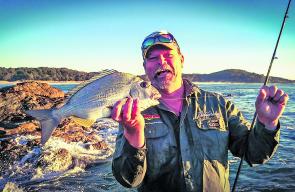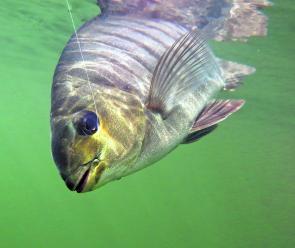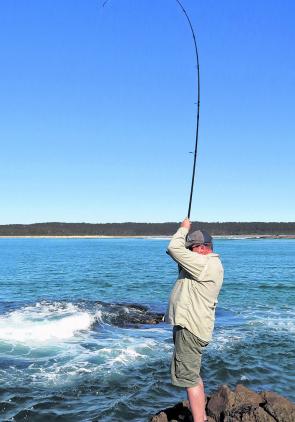The use of berley can dramatically improve your catch rates, no matter where you fish or what species you chase. This month, Starlo examines the basics of berleying from land-based locations.
The philosophy behind creating an effective berley trail is simple enough. By introducing food particles and the smell of food into the water, anglers attempt to attract, concentrate and excite fish, hopefully making them easier to catch. A good berley trail is akin to the mouth-watering smells wafting from the kitchen as a great meal is being prepared. It serves to sharpen appetites and draw potential diners towards its source without actually satisfying their hunger.
Berley can be especially useful for shore-bound anglers, who aren’t as mobile and able to follow the fish they’re chasing as their boat-based and kayaking brethren. But it’s also important to note that berleying can sometimes prove to be counter-productive for shore fishers. If your berley is carried away too quickly by the tide, current or wave action, it can actually take hungry fish with it, out of your casting range. For this reason, you need to be strategic in your approach. That means either choosing a location where the berley trail isn’t dispersed or taken away too rapidly, or maintaining a steady, unbroken trail rather than a sporadic and intermittent one. In a perfect world, you should aim to achieve both of those positive outcomes whenever you berley.
The content and make-up of your berley trail will depend on the species you’re targeting and what materials are readily available. The ideal base for any multi-species berley mix is a cereal product of some sort. Bread is perfect in this role. So are various animal feeds such as chicken feed pellets, bran, pollard, boiled wheat, dog biscuits and so on. The ideal attributes of any berley base are affordability, bulk without excessive weight (especially important when carrying your gear any distance), a propensity to soak up water, and the ability to appeal to a broad range of fish species.
My favourite berley base in most environments is stale bread. I save all our household bread scraps in a large freezer and also keep my eyes peeled for specials on bread at the supermarket, or for cafes and other outlets willing to selling day old (and older) bread at reduced prices. Stale bread, while bulky, is light and easy to carry. When soaked in water at your destination, it swells, softens and slowly sinks, creating the perfect berley trail base.
To this starchy, cereal-rich base I’ll add bait scraps, fish off-cuts and a splash of tuna oil. These ingredients greatly increase the appeal of the berley mix. I’ll also be sure to include some small pieces of whatever it is I’m using on my hook as bait, be it prawns, pilchards, cunjevoi, squid, worms or whatever else. If I’m chasing herbivores such as luderick or drummer, I’ll add some scraps of marine weed and algae, too.
This mixture can be stirred up by hand or with a stick in a large bucket and then dispersed into the water regularly using an old cup, ladle or scoop. Remember: a little bit often is much better than a lot occasionally. It can also pay to place some of your stale bread in a mesh bag and hang this at the water’s surface on a length of rope, so that wave and water action gradually disperses the contents.
In future Back To Basics columns we’ll look at some more specific styles and strategies of berleying, but for now the concept of a steady, unbroken, cereal-based berley trail makes a wonderful starting point and will almost certainly improve your catch rates, wherever you fish and whatever you chase… Give it a try!
Reads: 5250
Opportunistic feeders such as tarwhine respond well to a cereal-based berley trail.

Simply soaking and mulching up some stale bread in a rock pool then distributing it by hand gets the job done beautifully!

Luderick or blackfish respond especially well to berley.

“Got ’im on!” Another solid hook up in the berley trail.




